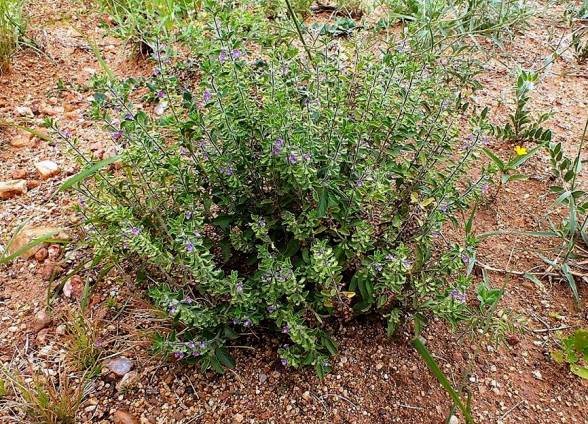Syncolostemon bracteosus

Author: Ivan Lätti
Photographer: Piet Grobler
Syncolostemon bracteosus is a herb, annual or perennial, growing four-angled stems, branched from the base to heights around 70 cm. The stems and leaves are hairy.
The simple leaves are opposite, stalkless and narrowly lanceolate. There are small, widely spaced teeth along the margins. The leaves are from 4 cm to 10 cm long.
The small, laterally symmetrical flowers grow in whorls at upper stem nodes. There are conspicuous, leaf-like, coloured bracts in blue, mauve or white over the flowers topping each inflorescence. The specific name, bracteosus, is a Latin word meaning bract bearing, referring to these floral bracts. Behind the corolla there is a green, hairy, five-toothed calyx.
The corolla of the two-lipped, tubular flower is white, sometimes with purple markings in the throat or on the upper lip. There are four exserted stamens in unequal pairs, the filaments united for the most part. The style ending in a two-lobed, knob-like stigma is far exserted and conspicuous. The fruits are oblong nutlets.
The species distribution is in Mpumalanga and Limpopo, as well as in some neighbouring countries.
The habitat is wooded grassland and open woodland. The species is not considered to be threatened in its habitat early in the twenty first century (Manning, 2009; Leistner, (Ed.), 2000; iNaturalist; https://www.zimbabweflora.co.zw; http://redlist.sanbi.org).

